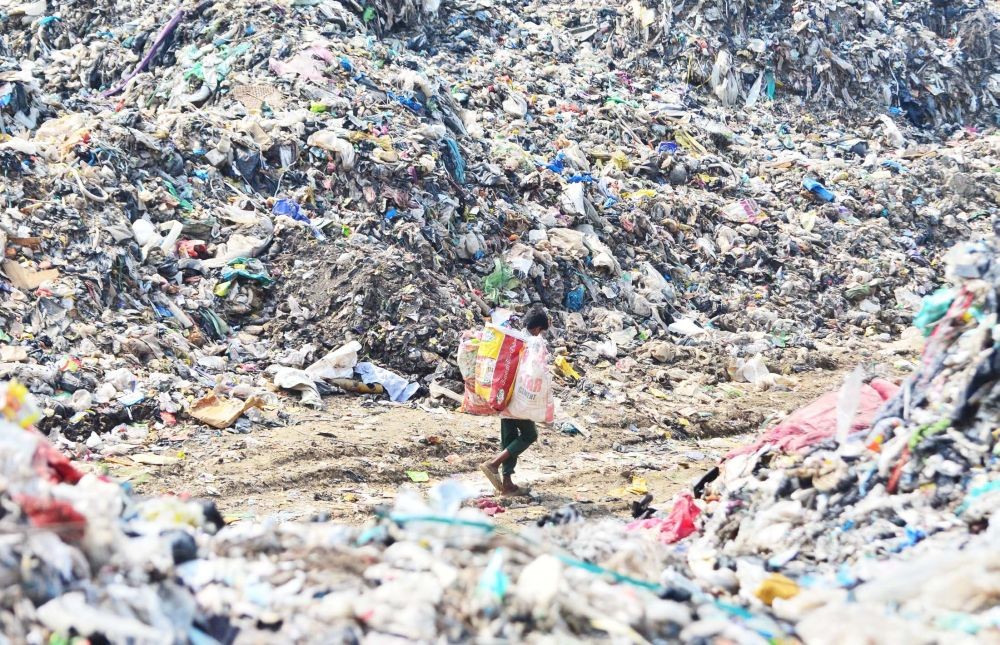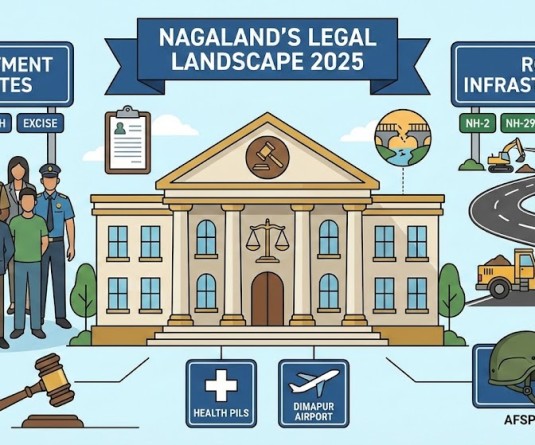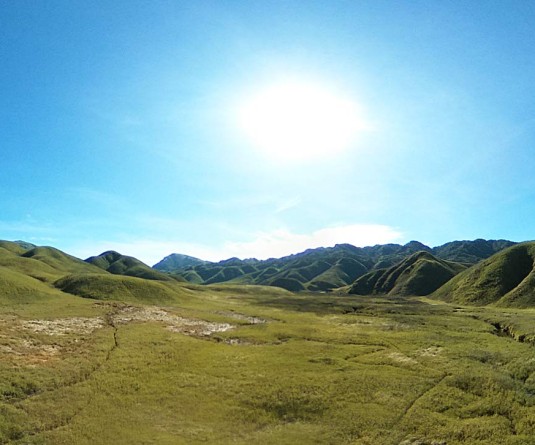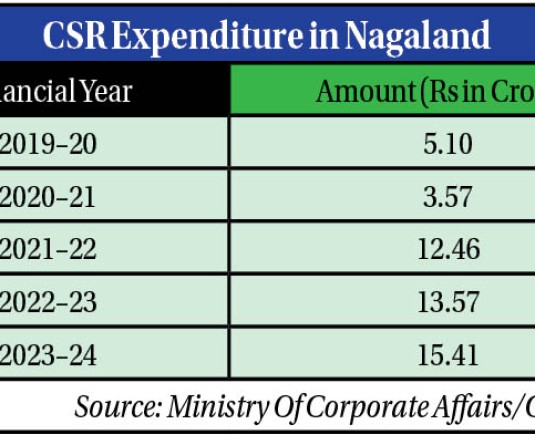MOUNTING WASTE: A ragpicker returns with re-usable items after collecting from a municipal waste dumping site on the eve of World Environment day in Dimapur on 4. The World Environment Day, an initiative of United Nation, is marked annually on June 5 with this year theme as “Solutions to plastic pollution.” (Photo by Caisii Mao)

Morung Express News
Kohima | June 4
Nagaland was ranked in the lower rung in assessment of 29 states across based on four themes - environment, agriculture, public health, and public infrastructure & human development, informed a report released on the eve of World Environment Day.
The report-annual compendium of data, ‘The State of India’s Environment 2023: In Figures’ released by the Centre for Science and Environment (CSE) on June 4 highlighted Nagaland’s poor performance on environment, agriculture, public infrastructure and human development indicators.
Out of a total score of 10, on environmental performance, Nagaland scored 3.4, the 28th rank out 29 states assessed.
Nagaland performance on agriculture was also at the bottom 23rd out of 29 states with 3.587 score.
On public infrastructure and human development, the score was 4.161 in the 28th rank.
However, on public health, Nagaland was ranked 9th in the top with a score of 5.183.
In terms of overall environmental performance, the report ranked Telangana at the top for its progress in increasing its forest cover and in municipal waste treatment.
The bottom rung was occupied by Rajasthan, Nagaland and Bihar while the bottom-ranked 10 states include six from the North-East, including Assam.
Some of the indicators that drag down Nagaland’s score were change in the total forest cover as well as indicator concerning actual sewage quantity treated as percentage of total sewage generated in 2020 and existence of 0.5 million tonnes of legacy waste yet to be ‘remediated.’
Key outcomes
Releasing report, Sunita Narain, Director General, CSE noted that it makes “sense of the state of affairs using data that otherwise remains cold statistics, adding: “As they say, what we can measure, we can fix.”
“In Figures is our attempt to use the best available data points to tell you the story of India’s environmental performance: where it has faltered, where it has managed to move towards a sustainable existence, and where, if any, are the gaps in data,” she pointed out.
“Three key things emerge out of this ranking of states,” maintained Richard Mahapatra, managing editor, Down To Earth.
First, in each theme, even the top-ranked states are struggling in some of the crucial indicators.
Further, none of the states perform well across all four themes critical for sustainable development.
And thirdly, small states like Goa and Sikkim seem to be performing well.
Meanwhile, in July 2022, when India banned single-use plastics, the Central Pollution Control Board had rolled out a mobile application called SUP-CPCB that allows citizens to complain about illegal plastic sale and use.
“A dismal redressal rate” meant a declining number of complaints, the report noted.
On management of municipal solid waste, it stated that while India generated over 160,000 tonne of municipal solid waste a day in 2020-21, 32% of this remained accounted for.
“This unaccounted waste usually ends up choking drains or is burnt illegally. On the brighter side, the countries waste treatment and monitoring improved,” it added.
On air pollution and health, it estimated that the average life expectancy of an Indian is likely to have shortened by four years and 11 months due to air pollution in 2020.
“People in rural areas are likely to have been the worst hit, with their average life expectancy cut short by five years and two months. The life expectancy of their urban counterparts are nine months longer,” it added.
On climate disasters and extreme weather, in 2022, India experienced extreme weather events on 314 of the 365 days – leading to a loss of over 3,026 lives and damage to 1.96 million hectare of crop area, the report further said.
While heatwaves were common in the first part of 2022, hailstorms became the predominant extreme weather phenomena in 2023, it said.
Climate-induced disasters accounted for almost 100% of the 2.51 million new displacements in India, it added.
Meanwhile, Kiran Pandey, programme director, environment resources unit, CSE and one of the lead analysts behind the report also observed that the centre have sourced all the data from government and official documents and sources.
For ranking the states, 32 indicators under four themes for 29 states were analysed.
“We identified and compiled the data, and then standardised the numbers to make them comparable. Differential weightages were assigned to the indicators, and the final scores and rankings were computed thereafter,” added Rajit Sengupta, associate editor, Down To Earth and another lead analyst and author of the report.






